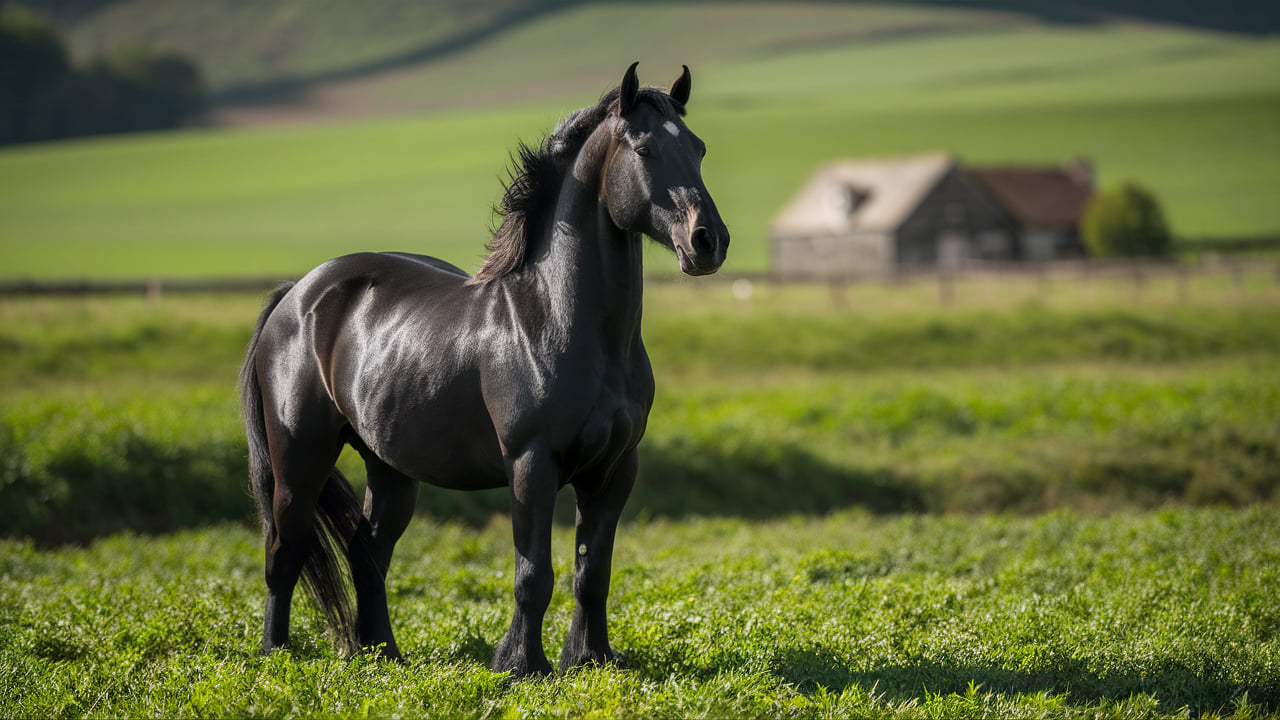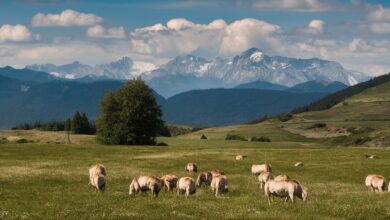In the world of horses and equestrian pursuits, names and bloodlines carry enormous weight. When someone references a BK Horse, it evokes questions: What does “BK” stand for? Is it a specific breed or a stable name? What characteristics distinguish a BK Horse from others? In this comprehensive article, we will explore the concept of “BK Horse” from every angle: its origins and possible meanings, breeding and lineage, training and care, its role and reputation in equestrian circles, and advice for anyone considering a BK Horse of their own. Whether you are a breeder, rider, or horse lover, this article gives you a rich, detailed understanding of BK Horse—what it is and what it represents in the larger tapestry of equestrian culture.
What Does “BK Horse” Mean & Where Did It Come From?
The term BK Horse is not universally defined, which means its interpretation depends heavily on context. In many equestrian circles, “BK” may be initials representing a stable name (for example, “B-K Quarter Horses” in Missouri, USA) or a breeder’s brand. In that case, a BK Horse would be one bred under that stable’s lineage or brand identity. For instance, in the world of Quarter Horses, B-K Quarter Horses markets working horses with careful bloodline planning.
In other regions (for example, Europe), there may be “BK Horses” as a name of a riding stable or breeding farm (such as “BK Horses” in Finland offering jumper breeding and stable services).
Thus, the meaning of BK Horse is likely tied to identity and lineage—a brand or breeding prefix, rather than a specific universal breed. Over time, riders and competitors may associate “BK Horse” with certain qualities—performance, temperament, lineage prestige—that are shaped by the breeding, training, and success of the horses from that stable or prefix.
Because of this, when you hear “BK Horse” in your equestrian community, it’s useful to ask: Which BK? Which breeder? Which region? That will reveal whether you’re referencing a bloodline, a stable name, or a family of horses sharing pedigree.
Breeding, Lineage & Genetic Foundations
If we take BK Horse to represent a breeding identity, much of its reputation hinges on the bloodlines and genetic selection that the breeders maintain. A stable that labels horses “BK” may emphasize:
-
Selective breeding for temperament, athleticism, conformation, and health.
-
Use of tested stallions and mares with known performance records or pedigrees.
-
Genetic health screening—diseases, structural soundness, and inheritance traits.
-
Crossing lines to combine desirable traits (e.g., speed, endurance, jumping ability) while reducing weaknesses.
For example, B-K Quarter Horses mention using stallions like BK Shiney Hollywood and bloodlines involving Shining Spark and Smart Little Lena. That demonstrates how the “BK” prefix is tied to a heritage and an expectation of performance.
The hallmark of a strong BK Horse line is not just flashy pedigrees, but consistent produce—offspring that reflect the desired traits across generations: sound structure, athletic potential, good temperament, and longevity. Breeders often track foaling rates, show results, and progeny performance to guide their selection decisions.
Training, Care & Development of BK Horses
Having a well-bred horse only goes so far—how it is trained, raised, and maintained truly defines its potential. For a BK Horse, these practices are critical:
Early Handling and Socialization
From foal stage onward, exposing the young horse to handling, grooming, human contact, and varied environments builds confidence and trust. This foundational exposure affects how the horse responds later to training stress or competition pressure.
Nutrition, Health & Growth Monitoring
To support growth without overstrain, nutrition must be balanced: appropriate proteins, minerals, vitamins, and energy adjusted by age, workload, and seasonal conditions. Health monitoring (vaccinations, deworming, dental, hoof care) is essential to maintain longevity.
Progressive Training Plans
Training should begin with basic groundwork: lunging, leading, desensitization, and foundational flatwork. Gradually, BK Horses are advanced into specialized tasks—whether jumping, reining, dressage, or performance work—at a pace considerate of their physical maturity.
Physical Conditioning & Fitness Work
To develop stamina, strength, flexibility, and resilience, condition work like hill work, interval training, gymnastic exercises, and cross-training are pivotal. These ensure the horse can perform at high levels without injury.
Mental Conditioning & Exposure
A BK Horse intended for competitions must be exposed to varied environments: shows, crowds, trailer loading, noise, and distractions. This mental training ensures composure under pressure.
Regular Assessment & Adjustment
Trainers must monitor progress, identify weaknesses, and adjust training or rest accordingly. Many top stables will record metrics (heart rate, recovery times, stride lengths) to refine programs.
A BK Horse that receives disciplined, patient, and intelligent training is more likely to fulfill its genetic promise.
Role & Reputation in Equestrian Circles
Over time, the label “BK Horse” may accrue reputation based on how horses from that lineage perform in shows, competitions, and daily use. The reputation is shaped by:
-
Show & Competition Results: High placements or wins in recognized competitions (jumping, reining, cutting, dressage) boost prestige.
-
Durability & Soundness: Horses that stay healthy, sound, and usable through many seasons gain respect.
-
Temperament & Rideability: A horse that is responsive but sensible under a rider is more valued than a high-strung but talented one.
-
Progeny Success: Offspring that inherit desirable traits reinforce the reputation of the BK prefix.
-
Sale Demand & Market Value: Horses from the BK line that command higher prices in sales show market belief in the brand.
For example, B-K Quarter Horses in Missouri (USA) have maintained buyer loyalty and repeated sales, demonstrating that their “BK” label carries buyer confidence.
In Europe, BK Horses involved in jumper breeding also build reputation through athlete competition outcomes.
Thus, in equestrian circles the term “BK Horse” may come to indicate a stable brand synonymous with certain qualities—soundness, performance, good conformation—and is used by riders, buyers, and breeders as shorthand to judge pedigree potential.
How to Choose, Acquire & Care for a BK Horse
If you are considering acquiring a BK Horse, here are guidelines:
-
Verify Pedigree & Documentation
Demand stud books, breeding records, health certificates, DNA verification if available, and past performance data. A true “BK Horse” should have supporting lineage records. -
Physical and Veterinary Examination
Before purchase, get a thorough vet check including radiographs, lameness exam, dental, and general health. Check conformation, hoof structure, joint health, and signs of past injury. -
Temperament Matching
Ensure the horse’s temperament matches your experience and intended use. A BK Horse for competition should be brave and trainable—but not overly volatile. -
Trial Period or Ride Test
If possible, ride or test the horse in multiple environments. Observe its behavior under stress, its gait, responsiveness, and movement quality. -
Consider Age & Development Stage
Younger horses often come at lower cost but with risk. Mature, proven BK Horses are costlier but more predictable. Balance your budget with risk tolerance. -
Ongoing Care & Management
After purchase, commit to continued health care, balanced nutrition, regular farrier work, and appropriate training schedules that respect the horse’s limits. -
Continued Development & Monitoring
Track progress, adapt training, and maintain open communication with vets and trainers to maximize potential without pushing into injury.
By following careful selection and management, a BK Horse can become not just an asset, but a long-term equestrian partner.
Conclusion
In equestrian communities, “BK Horse” often signifies more than just a name—it represents lineage, brand identity, expectations, and the promise of performance. Whether it is a prefix tied to a breeder, a stable name, or a bloodline label, the real value of a BK Horse depends on careful breeding, disciplined training, excellent care, and consistent reputation-building through performance. For anyone considering involvement with BK Horses—be it as a buyer, breeder, or rider—the keys are due diligence, sensitivity to temperament and health, and respect for both genetic potential and the horse as a living being. A true BK Horse is more than a label—it is a legacy in motion.
FAQ — Frequently Asked Questions
Q: Is “BK Horse” a recognized breed?
A: Not typically. “BK Horse” is more often a prefix, stable name, or brand identity attached to horses bred under a particular breeder or farm—not a distinct breed in itself.
Q: What does “BK” stand for in BK Horse?
A: It varies. In many cases, “BK” may be initials of the breeder, stable name, or business brand (e.g. B-K Quarter Horses). Always check with the specific breeder.
Q: Are BK Horses better than other lines?
A: “Better” depends on breeding quality, training, care, and use case. A well-bred and well-trained BK Horse can excel—but poor management or weak lineage can nullify the label.
Q: How can I verify a true BK Horse?
A: Request pedigree records, registration papers, health certificates, and check performance history. Also get a veterinary examination.
Q: What disciplines are BK Horses used in?
A: Depending on the stable’s focus, BK Horses may be used in Western disciplines (cutting, reining, ranch work) or English disciplines (jumping, show jumping) or general performance. For instance, BK Horses in Finland are involved in jumping breeding.
Q: What is the cost and maintenance of a BK Horse?
A: Costs vary by region, pedigree, training level, and health condition. Maintenance includes feed, vet care, farrier, tack, training, and stabling—similar to other quality sport horses.




